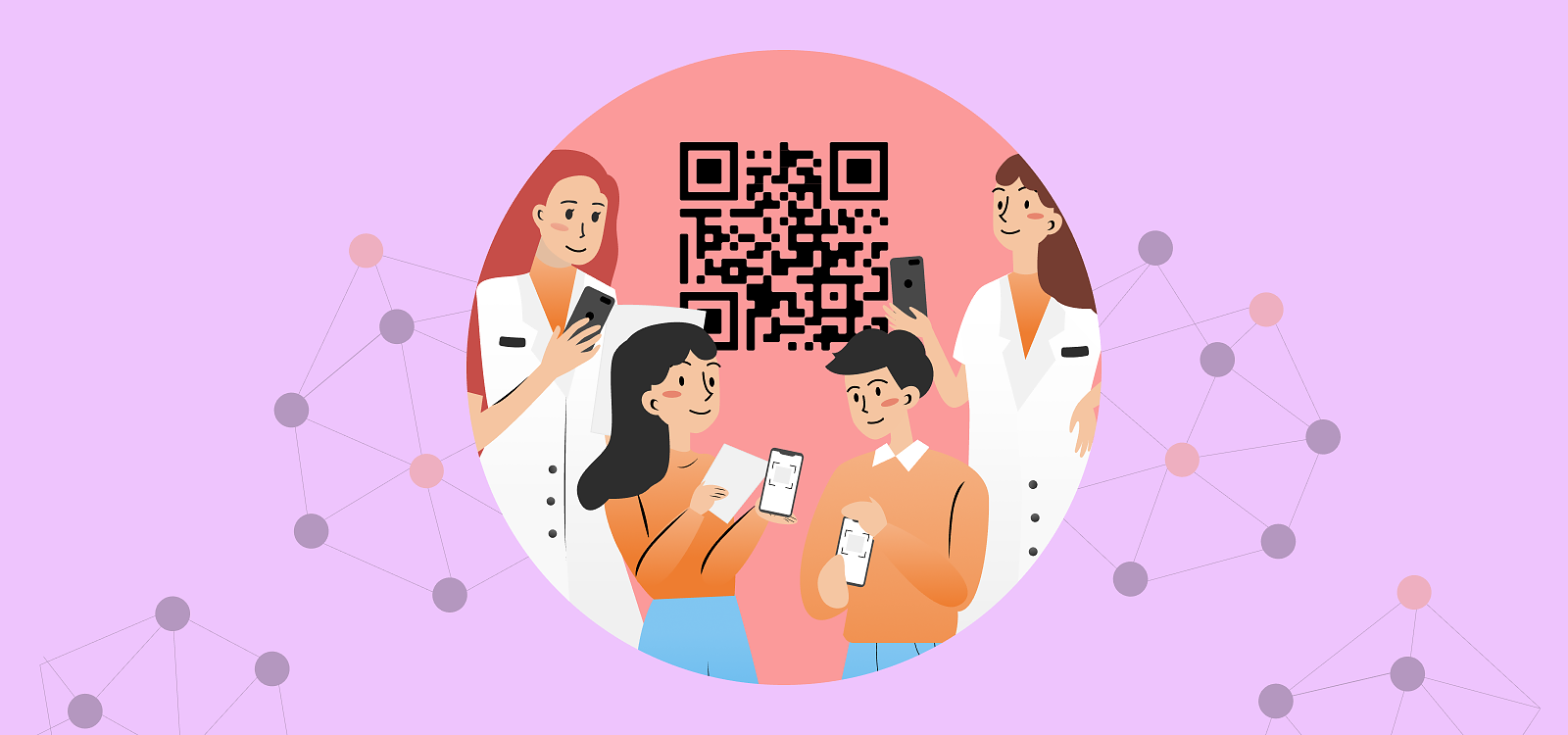QR Code
These days QR codes are everywhere, so it is almost unimaginable to be unaware of them. The Quick Response (QR) code was invented in 1994 in Japan and its initial design is said to be influenced by the black and white grid of the board game Go. At first, they were used in the automotive industry to track vehicle parts during manufacturing, but with the rise of smartphones they have quickly become popular for consumer advertising. Since the start of the COVID-19 pandemic, we are seeing an increased demand for contactless interactions and this has only increased the popularity of QR codes. They have even replaced restaurant menus and are used as COVID-19 vaccination certificates. Though many of us know what they look like and how to use them, we rarely stop and think about how they work.
A QR code works similarly to barcodes at supermarkets. Each QR code consists of black squares on a white background where each black square represent a different piece of information. A QR scanner is needed to read and translate the unique pattern of the black square into human-readable data. Today QR scanners are usually smartphones, which is one of the reasons the QR codes have become so popular. The information encoded in the QR code, sometimes also referred to as the payload, can be very different and the amount of encoded information determines the number and location of the black squares and as a result also determines the size of the QR code. A single QR Code symbol can hold up to 4296 alphanumeric characters, which is roughly equivalent to two pages of text. However larger payloads also require larger QR codes with more black squares.
Often the payload is just a simple URL pointing to an internet website where the user can find additional information. This is very convenient since URLs are short, keeping the size of the QR code small and the information on a website can be updated without needing to generate a new QR code. However, an internet connection is then needed in order to read the information. In other cases, the payload itself can completely encode all the information and no internet connection is needed. This is useful in cases with limited internet access or where privacy might be of concern.
The Smart Blood Analytics Swiss Partner laboratories use QR codes to completely encode blood test results. The QR code is then printed on the blood test report that the patient receives from the laboratory and can later be read by our medical devices to simplify the user input, enhance the user experience and prevent possible input mistakes that might have happed with manually typing in the results. By storing the blood parameter values in a QR code rather than encoding a hyperlink to a remote internet website, the user keeps total control over his/hers sensitive information within a QR code printed on the blood test report.






